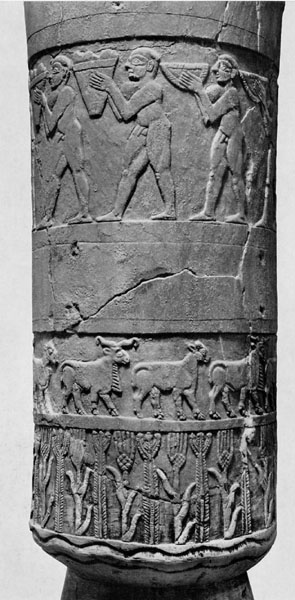Sumerian Art: Warka Vase Uruk (week 2 blog 1)
In the city of Uruk, there is a temple that is dedicated to the goddess of love, fertility, war, and is the main patron of the city, Inanna. All of the city's agriculture would be given to Inanna and stored in her temple. The Warka Vase was discovered c. 3000 B.C.E. and in Uruk. Warka is the modern name Uruk is ancient. The vase is made of alabaster, which is a mineral or a rock that can be softened and used for carving. It stands 3 feet high and it weighs about 600 pounds. That would found by a German Excavators who were working a ritual deposit, that is a burial undertaken as a part of a ritual in the temple of Inanna.
The Warka Vase is sacred to the people who lived 5,000 years ago. On the vase, there are 4 bands that are parallel. Starting with the bottom, there are lines that form into plants that represent grain and reeds, the grain most likely happens to be barley. Those are the most important agricultural harvests. One layer up is sheep, they represent rhythmic activity. Above that is, 9 identical nude men. The nudity in art is presumed as humble and low status, they could represent servants or slaves and the next band are assumed to be the slave owners. The men hold vessels in front of their faces full of agricultural system; fruits, grains, wine, and mead. The top band is a man handing the woman agricultural produce. The king is standing behind the man with the produce.There are 2 reed bundles and the woman represents the goddess Inanna. The king of chief priest is responsible for all agricultural wealth of the city.
Cite this page as: Dr. Senta German, "Warka Vase," in Smarthistory, September 28, 2017, accessed September 3, 2020, https://smarthistory.org/warka-vase/.

Comments
Post a Comment